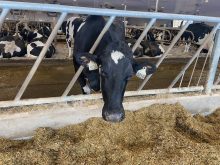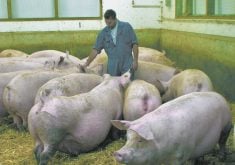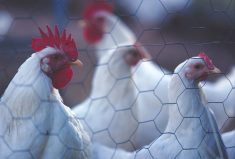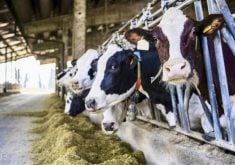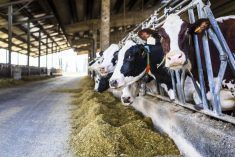Aworld-leading approach to creating a methane-specific breeding index has been developed by Lactanet and will launch next month.
Not content to wait until “sniffer” technology for measuring bovine methane emissions eventually becomes more affordable, the Canadian dairy data collection and genetics analysis organization developed the index based on milk samples.
Ahead of the index’s official launch in April, top scientists involved with the project expressed confidence they’re on the right track with the world-leading approach.
Read Also
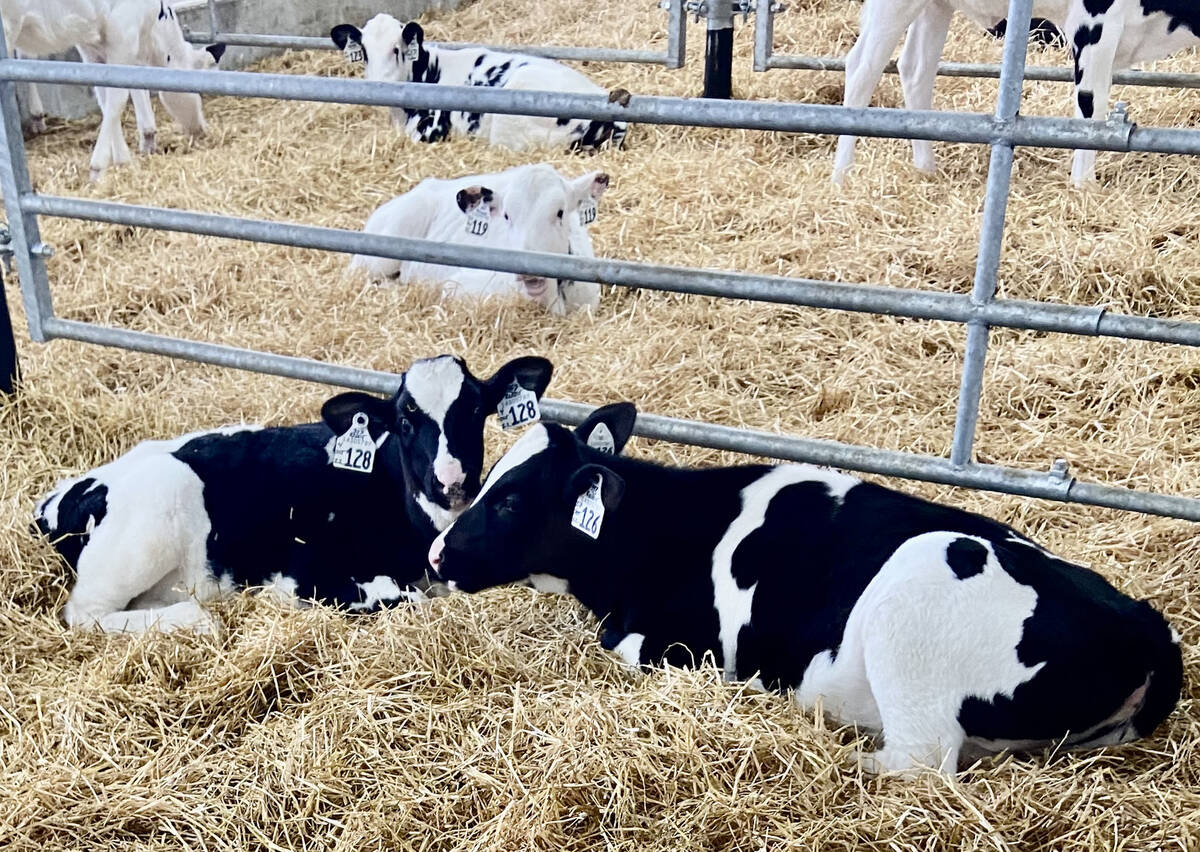
Back to the drawing board for sexed semen fertility ratings
Lactanet, the national genetic evaluation and dairy data provider, goes back to the drawing board with its sexed semen fertility rating index prototype.
Why it matters: Many farmers support efforts to decrease the agriculture sector’s climate change impacts but they want assurance that the measures they take will have meaningful results.
“Canada will be the first country globally to offer national (Holstein) evaluations for methane efficiency,” declared chief service officer Brian Van Doormaal during Lactanet’s semi-annual Open Industry Session Feb. 23.
In an article published at Lactanet’s website on Jan. 16, CEO Neil Petreny added, “this significant accomplishment was made possible by our team of world-class geneticists. Their efforts were supported by the vision of the milk‐recording founding partners of Lactanet (including Ontario Dairy Herd Improvement) to collect and store mid‐infrared (MIR) spectral data from millions of milk samples over the past five years.”
Van Doormaal’s presentation, entitled “Lactanet’s Data Collection Strategy for Sustainability Traits”, followed an explanation from Dr. Filippo Miglior, Lactanet’s senior advisor for genetics strategic initiatives, about the soon-to-be-introduced methane efficiency breeding tool.
Miglior, who is also a University of Guelph professor, concluded his talk by saying Holstein breeders who select bulls based on the new tool could achieve 20-30 per cent reductions in methane emissions from their herd by 2050, keeping with stated climate change-related federal government and Canadian dairy sector goals.
Ratings for bulls and females in the index are based on MIR predictions of methane emissions for approximately 515,000 first-lactation cows in milk-recorded herds across Canada. Considerable focus was given by the Canadian members of the team – including scientists from Lactanet, U of G, and the farmer-controlled Semex bovine genetics supplier – to prove MIR is a reliable predictor of methane emissions, and the new methane efficiency index is independent of a cow’s production or fertility traits.
In the system’s introductory version, genetic predictions for methane efficiency will be available free for any Holstein female enrolled in DHI, bundled with feed efficiency ratings for $8 per cow for those not on DHI, and available for bulls on a scale ranging from $250 per Canadian-born animal to $400 for international bulls. An early-purchase discount is offered for all bulls in 2023.
Methane efficiency predictors aren’t mandatory for bulls to continue in Lactanet’s proofs but Van Doormaal stressed that semen suppliers should consider offering it as part of their marketing programs. Research into the index was, after all, undertaken at the direction of the farmer-controlled boards of directors of Lactanet and Semex.
“The introduction of methane efficiency … is one of several steps that Lactanet will be taking in support of the new ‘sustainability’ pillar approved by the Board of Directors as a key element of our strategic plan,” board of directors chair Barbara Paquet said in the Jan. 16 Lactanet article.
Van Doormaal noted development of technology to directly collect methane emission data continues in Canada, including a new partnership between Lactanet, Genome Alberta and commercial herd Sunalta Farms.
Installation of research-friendly feed intake bins at the Alberta-based dairy “represents a significant investment in equipment, something that we needed to have on a commercial farm. And we thank the owners of that business for agreeing to our collaboration,” he said.
Pressed by a session attendee to justify the fee structure for the new index, Van Doormaal noted it’s similar to what happened when Lactanet introduced its new feed efficiency index in 2022, which predicts a daughter’s energy-corrected milk production compared to dry matter intake as a means of controlling per-litre feed costs.
He said research into both indices and the commitment for ongoing data collection was more costly than for other recently introduced genetic tools.
Down the road, Van Doormaal added, it’s likely that further-perfected versions of feed efficiency and methane efficiency will be combined into a singular “sustainability index” aimed at limiting the national dairy herd’s environmental impact.
“Lactanet needs to build the resources to finance the continued collection of this type of data, and that’s the reason for the fees.
“It’s not a model for all traits” that Lactanet will introduce, Van Doormaal said, “but it’s a model for traits that are really expensive to collect data on.”
He also defended enhanced access to the new ratings for females enrolled in Semex’s Elevate herd management program. Semex contributed financially and scientifically to the project, Van Doormaal noted, and both Lactanet and Semex share visions for farmer-based governance and continued investment in research.
Methane efficiency ratings are expressed based on 100 being the midpoint value. For Lactanet’s April proofs, proven bull ratings range from 82 on the low end to 117 at the top end.
According to Miglior, for every decrease of five points on the scale, when comparing two sires, it’s expected the daughters will produce approximately three kilograms less methane per year, or an estimated reduction of 1.5 per cent from the emissions of the average Holstein.




